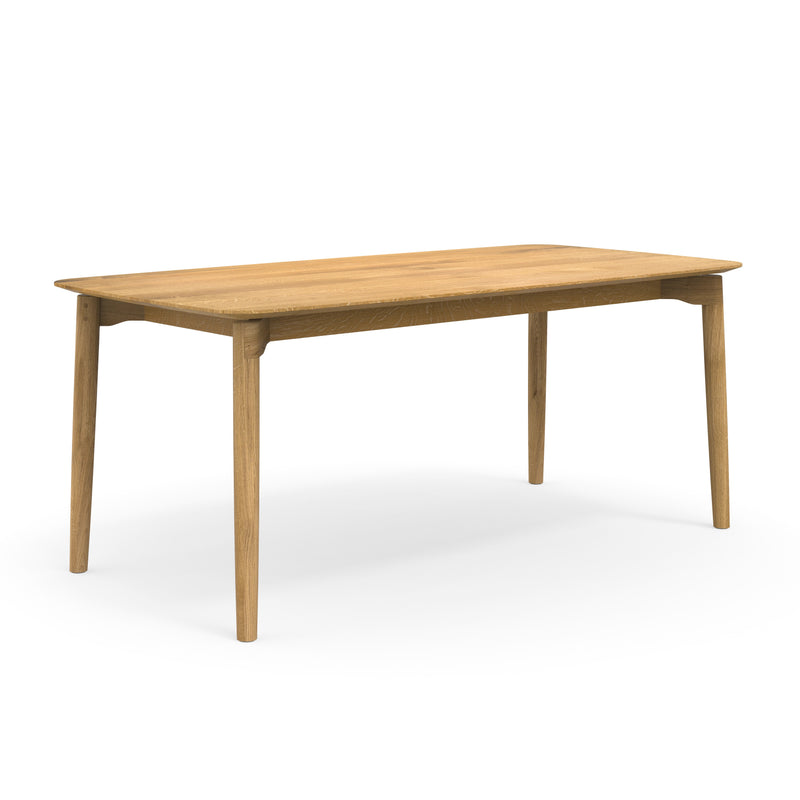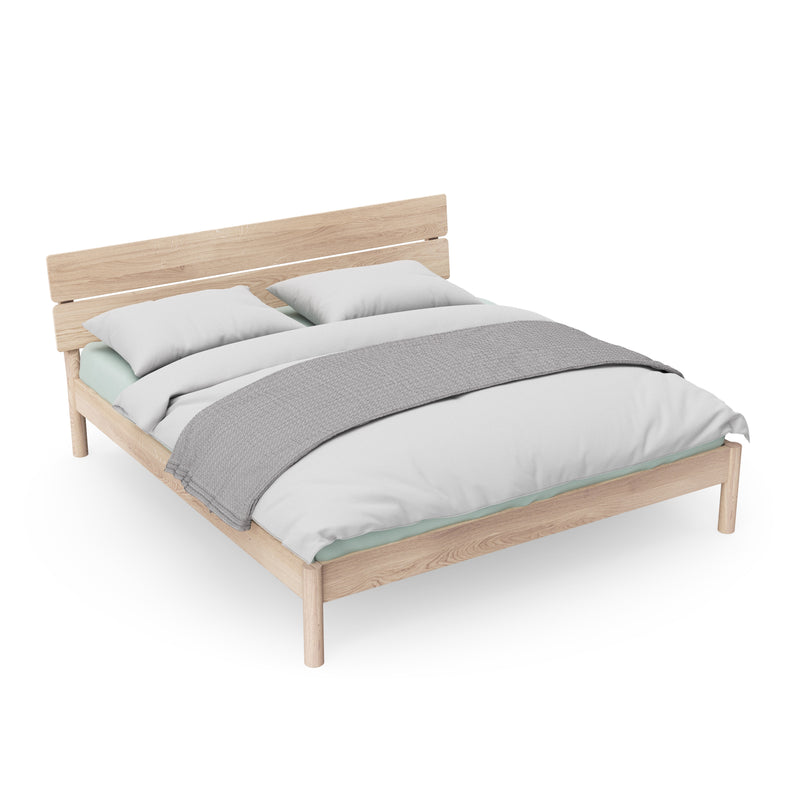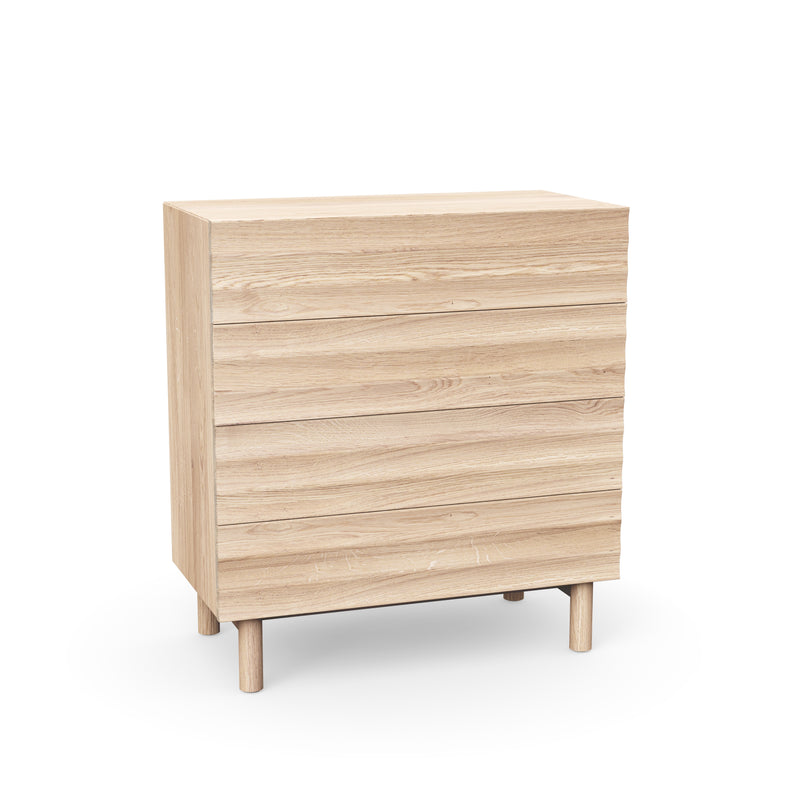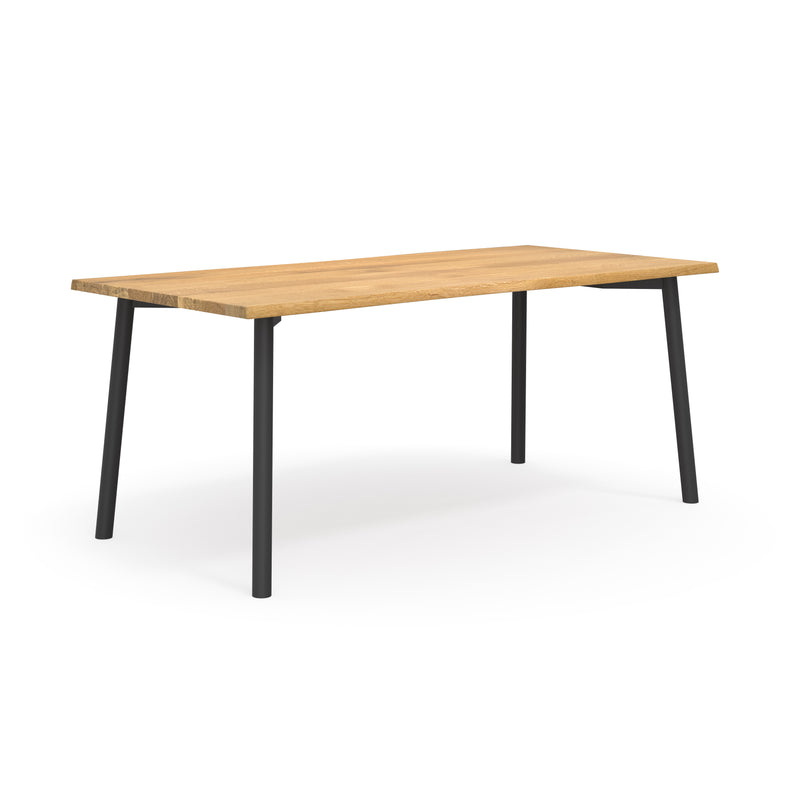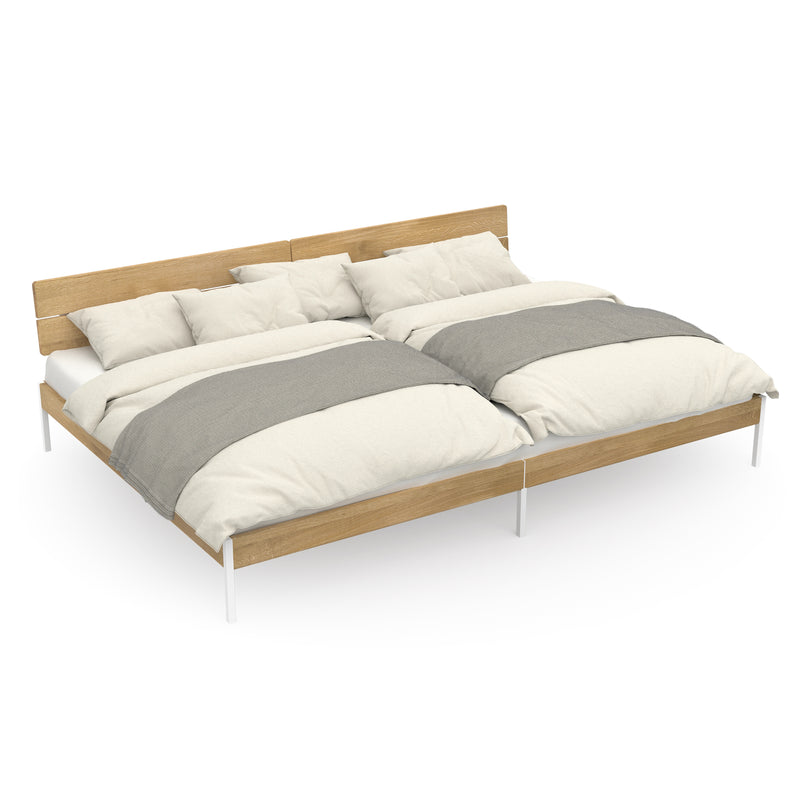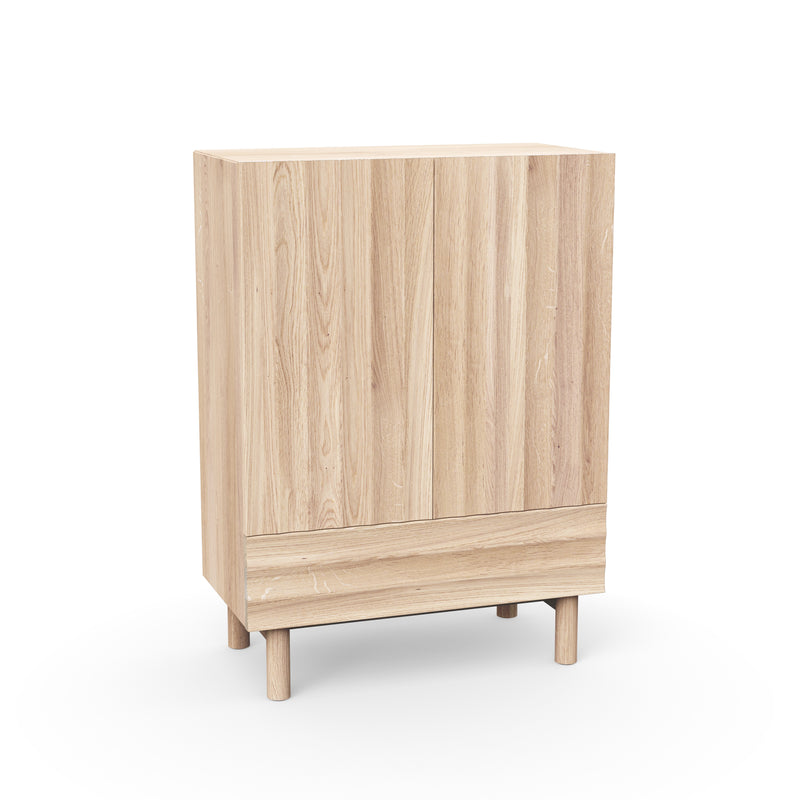Oak

Oak is a robust, durable hardwood with a distinctive grain. It is resistant to moisture and wear, making it ideal for furniture, flooring and interior design. Its warm colour palette ranges from light yellow to dark brown, giving rooms a timeless elegance.
What does oak wood look like?
Oak wood is characterized by a distinctive, uniform grain with fine annual rings and occasional knots. The color palette ranges from light yellow to warm brown and reddish tones, often with a natural sheen.
As a natural product, oak wood can vary in appearance. Especially with solid oak wood, no two pieces of furniture are exactly alike.
In contrast to wild oak or knotty oak, standard oak typically uses lighter wood pieces with calmer grain and fewer knots. This results in a more uniform and subdued look.
How is oak wood treated?
Oak is commonly oiled or lacquered and often treated with a white-pigmented (light) oil. With heavily pigmented stains, uneven coloring may occur.
A lacquer fully seals the wood, while an oiled surface allows the wood to breathe and absorb or release moisture. Although oiled oak is somewhat more sensitive than lacquered surfaces, it is easy to clean and can be re-oiled when needed. In the long term, scratches and stains are much easier to remove from oiled oak. Additionally, furniture oil is usually the more eco-friendly option – thanks to its typically natural ingredients.


Environmental impact of oak wood
Oak wood is a renewable resource and is considered one of the most sustainable and environmentally friendly materials in the construction and furniture industries. Its properties – such as durability, aesthetics, and versatility – make it a preferred choice in many applications. But what about its ecological footprint?
1. Sustainability of raw material sourcing
Oaks grow mainly in the temperate zones of Europe, North America, and parts of Asia. In Europe – especially in countries like Germany and France – oak forests are an essential part of the forestry sector. The sustainability of oak wood heavily depends on the responsible management of forests. Certifications such as FSC (Forest Stewardship Council) and PEFC (Programme for the Endorsement of Forest Certification) ensure that trees are harvested responsibly and new saplings are planted to maintain forest stocks.
2. Processing and energy consumption
The processing of oak wood is energy-efficient compared to materials like steel, concrete, or plastic. The energy requirements are mainly for felling, sawing, drying, and possibly surface treatment. Modern technologies and energy-efficient drying methods have further reduced energy consumption in the wood industry.
One of the main environmental challenges of using oak wood is transportation. As oak is traded internationally, long transport distances can increase its CO₂ footprint. Locally sourced oak wood helps minimize this impact and also supports the local economy.

3. Durability
Oak wood is known for its exceptional longevity. Furniture, flooring, or buildings made of oak can last for decades without losing functionality or aesthetics. This long service life reduces the need for frequent replacements, which in turn conserves resources.
4. Reusability
Through recycling systems or bulky waste collection, oak wood is often used for energy in biomass power plants. Although the combustion is CO2-neutral – since the oak tree has absorbed CO2 during its lifetime – the more ecological approach is the material's high repairability. Especially in furniture, oak can easily be glued, sanded, or re-oiled when damaged or worn – and looks like new afterward.
5. Biodegradability
Oak wood is a fully biodegradable material. In nature, it decomposes and returns nutrients to the soil. Unlike plastic or other synthetic materials, oak leaves no toxic residues behind.
Technical properties of oak wood
| Property | Value |
|---|---|
| Wood type | Hardwood |
| Density (bulk density) | 0.65 – 0.75 g/cm³ |
| Compressive strength | 47 – 52 N/mm² |
| Bending strength | 90 – 100 N/mm² |
| Brinell hardness | 34 – 37 N/mm² |
| Modulus of elasticity | 10,000 – 12,000 N/mm² |
| Durability | Highly resistant to wear |
| Weather resistance | High, especially in heartwood |
| Color | Light yellow to dark brown |
| Workability | Good, though tool wear is high due to hardness |
| Applications | Furniture, flooring, stairs, facades, barrels |
Oak wood at ekomia
Due to its outstanding ecological properties and aesthetics, we frequently use oak as a material in our collections.
We use only European oak from sustainably managed forests, certified by FSC or PEFC.
We always apply an ecological, vegan furniture oil, which allows the wood to breathe and makes it easy to repair when needed.

Questions & answers for Oak
Here we answer some questions about Oak that are frequently asked by other users.
Do you still have any questions?
Do you have any questions or comments on this topic? Write a comment, we will be happy to answer.
